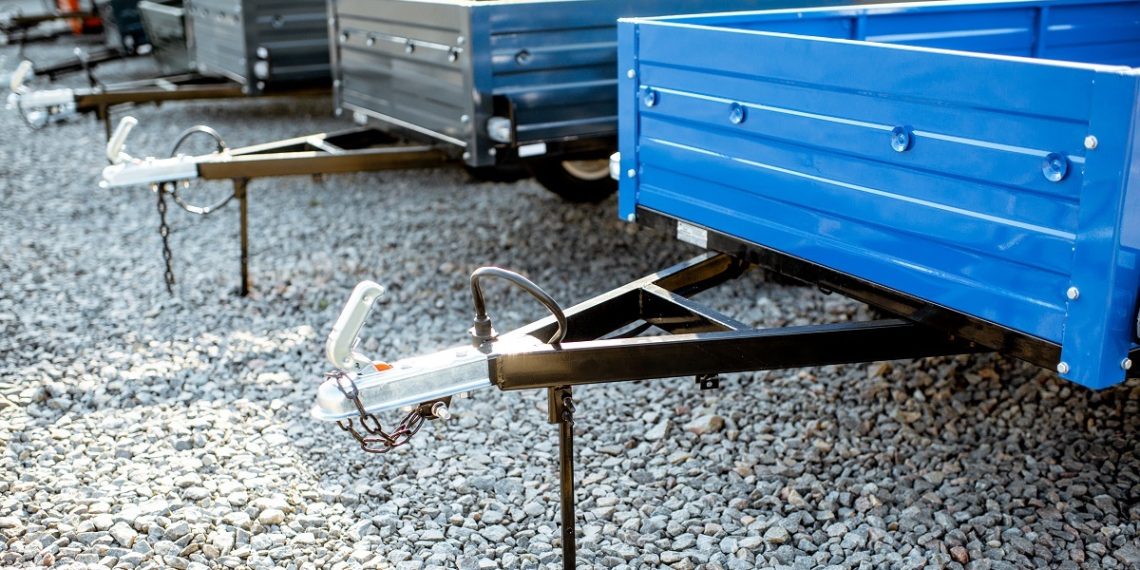With the weather outside about as nice as it can get for the year, it is time to get those boats, wave runners, and other toys out and running. Or perhaps, you’re taking the opportunity to do work in your garden or complete some home renovations. If you are new to using a trailer, you may have questions and concerns about hooking it up to your vehicle. If you purchased from a reputable dealer, such as Big Man Trailer, they should show you everything you need to know, but it never hurts to take the time to think through the process properly.
Whether you are taking your new boat out to christen it, you have a fleet of ATVs and bikes that the family has played with for ages, or you are transporting garden waste to the local landfill, you have to get everything loaded on and off a trailer safely. It goes without saying but in addition to loading the trailer correctly and securing everything properly, it’s vital that you get it safely connected to your vehicle. Accidents can happen, especially when dealing with large, heavy, metal objects on wheels, and learning to properly connect your vehicle to a trailer is the best way to avoid them.
Continue reading for our quick and easy guide on how to safely hook that trailer up to your vehicle.
Two Heads Are Better Than One
As safety is the number one concern when working with any type of large equipment, you should never try to attach a trailer by yourself. This is especially true for people who are inexperienced, as it is very difficult to line it up without help. Have someone else with you to help guide the vehicle and get everything aligned correctly, as this will make your job much easier, not to mention reduce the chance of an accident.
Start With The Hitch On The Trailer
While every trailer is not exactly the same, most of them do follow a similar process to attach and remove them to/from a vehicle. You should start with the trailer itself, going to the end with the jack and hand crank. The hand crank will raise and lower the ball receiver to line up with the ball on the vehicle. For now, you want to raise the trailer’s piece higher than the one on the vehicle by a few inches minimum, as it needs to go on top of the ball attached to the truck.
Ensure The Hitch Is Unlocked
Part of the security included in every trailer is a lock that ensures that the connection cannot be broken. The only thing is, this must be unlocked before you can attach anything, so it makes sense to double-check this first. A lot of these locks are simple metal pins that go through a hole, but some are designed differently, and it is important to know how yours works. Once you make sure that the lock is open for business, you are ready to connect.
Connecting The Vehicle To The Trailer
Have the other person get between the trailer and the vehicle to make sure everything is lined up properly. This is essential if your trailer is already loaded, and just easier if it is still empty, so try to find a place with enough space. When lined up properly, the person outside should slowly guide the vehicle in reverse until they have the ball of the vehicle underneath the ball receiver. Use the hand crank to lower the receiver onto the ball, making sure it is in the proper position before locking it in place.
Check The Connection
Yes, you already checked and locked the trailer to your vehicle, but you can never be too safe when working with large pieces of metal. Do one more check on the connection, testing that the lock is working properly as well. The last thing anyone needs is a trailer coming off at highway speeds. If your trailer has a handbrake, make sure that it is off now that your trailer is secured to the vehicle.
Don’t Forget The Electrics
The electrics is the part that gets forgotten about more than anything else, so make sure that you don’t make the same mistake. While you can drive the trailer without it connected, you won’t have any lights to notify other traffic about braking and turning which can be extremely dangerous. Every vehicle will have a different method to hook up the electrical, but there should be a plug somewhere on or in the back of your vehicle that you can connect to.
Drive With Your Trailer Attached, Confident You Are Safe
Connecting a trailer to your vehicle is not the most difficult task, as long as you pay attention, don’t skip steps, and keep safety as the top priority. Following the tips outlined above, you can be sure that your trailer is safely attached to your vehicle before you drive away. Knowing that your trailer is securely attached to your vehicle will allow you to be more confident when you’re out on the road towing your trailer behind you.


